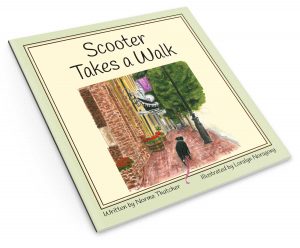
Photo courtesy of Ales Krivec on Unsplash
My husband Richard has had a long-time fascination with trains; this was firmly in place before I ever showed up in his life. He and his dad were especially fond of the old-time steam trains.
So when a few years ago, Richard proposed that he and I take the Amtrak California Zephyr from Chicago to California (a 52 hour trip), I agreed. Not that I was crazy about the thought of being on a train for that long, but I understand that good marriages are about give and take. This was important to him and I wanted to honor that.
Since I knew that I would likely one day write about the experience, I took notes on the people with whom I engaged in conversation. This post is about four of them.
One middle-aged couple had a son who wanted to build his own home, but was having trouble defining just what he desired of the finished product. I was able to refer them to three books I had used while designing our home, such as Sarah Susanka’s The Not So Big House.
A recent college graduate from the University of Utah was on his way to grad school in California. Upon learning his first name of Oakley, I inquired as to whether that was a family name. Indeed it was, and that question led to a great story about the line of “Oakley” men, some of whom had despised the name and reverted to using nicknames. This Oakley had decided to embrace his first name and felt that at his young age and inexperience, it lent him an air of credibility.
I spent one lunch on the train with two people of disparate backgrounds. The 30ish woman named Victoria described herself as an “exotic dancer/adult entertainer.” The man in his late 50s named Cab had been a minor actor, photographer, teacher, and an employee of the California Academy of Sciences. Cab was on this particular train because he had decided to take a couple of weeks riding trains across America.
Victoria was on her way to visit her dying grandmother. She poured out her heart to Cab and me about her family hating her because of her chosen lifestyle. They were angry and embarrassed over her profession, so she wasn’t sure what she’d be facing when she arrived in California and joined her family at Grandma’s bedside.
Cab and I provided some wisdom steeped in compassion. Victoria cried. It was obvious it had been quite some time since she’d been with non-judgmental people who were willing to listen.
At the end of lunch, Cab remarked, “I’ve had many interesting train conversations while traversing across America and this has been the MOST interesting.”
Some of us may consider ourselves as anything but good conversationalists. We may think our lives are boring, and we question who in the world would want to know about our lives.
But by asking open-ended questions of others and following up with encouraging keep talking verbal nudges such as “Tell me more,” and “How did that come about,” we can be interested listeners. And as it turns out, listening is the best type of conversationalist we can be.
Just as with the train track, we may not know where our words will take us.




This lifted up was very nice. I agree that great conversations are better with good listeners.
What a joy it is to talk with old and new friends and be encouraging to others. Thank you for
your beautiful thoughts and advice.
Ruth, you are just the sweetest person. I’m glad our mutual friend brought us together online.